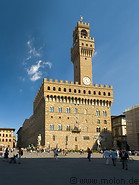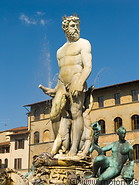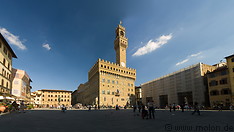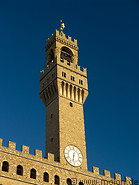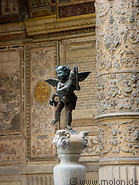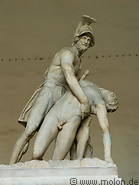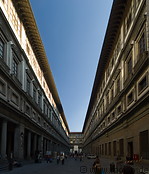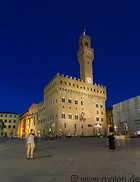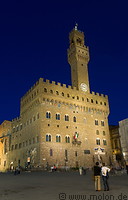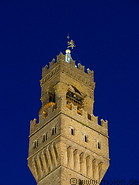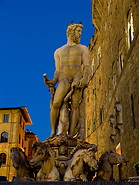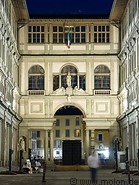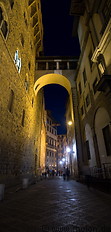Piazza della Signoria has been the political heart of the city from the Middle Ages to the present day. It began taking shape from 1268 onwards, when the Guelph party gained control of the city again and decided to raze the houses of their Ghibelline rivals to the ground.36 houses were demolished which explains the unusual "L" shape of the square and why the buildings around it are unaligned. The square gets its name from Palazzo della Signoria (also known as Palazzo Vecchio), designed by Arnolfo di Cambio in 1298-99 for the seat of the Republican government. The square of the Uffizi stretches out on the south side, towards the Arno, with the eye-catching Loggia dei Lanzi, whose late Gothic roof covers 15 statues including Benvenuto Cellini's wonderful Perseus holding up the head of the Medusa.

